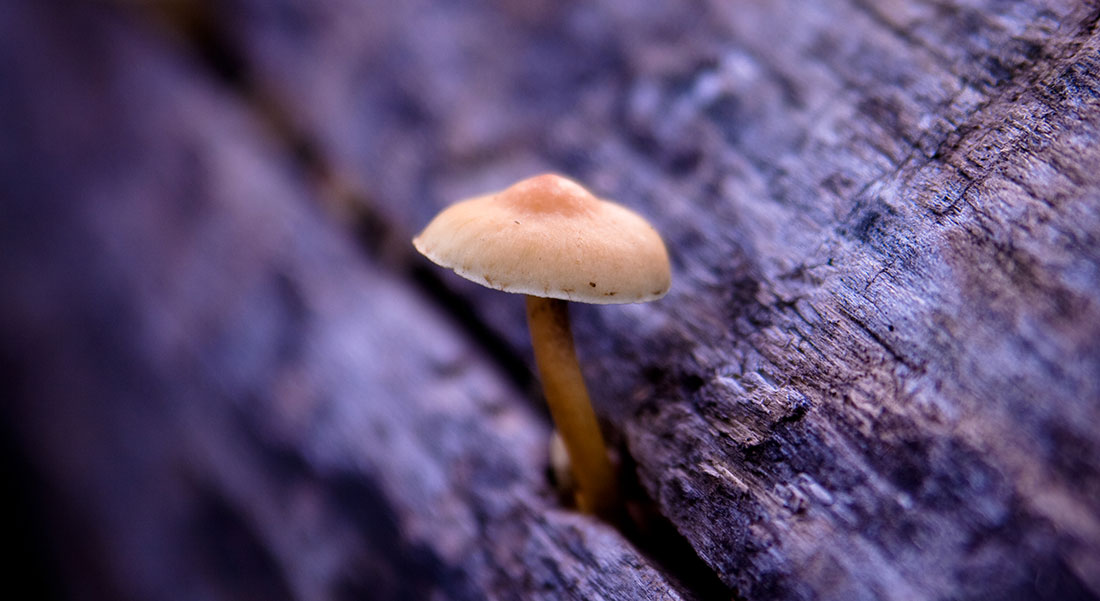Safe New Mushroom-Based Biopesticides Could Spell the End for GMO Foods
BY JUSTIN FAERMAN

a new class of safe, natural mushroom-based biopesticides is a very real alternative to health and environment damaging synthetic pesticides currently in widespread use. photo: der hannes photocase.com
It has been said by some of the wiser among us that if a problem exists, a corresponding solution will also exist to be found in nature. That somehow, some way, this planet we live on is a self-contained,
self-regulating, even self-aware system that balances itself continually in response to the evolving species and situations present at any time. Just as we evolve in response to our environment, so too does the living earth respond to inherent and human-made challenges.So, it should come as no surprise then that world-renowned mycologist Paul Stamets has discovered a mushroom-based biopesticide that is just as effective (if not more so) as synthetic chemical pesticides, without any health or environment-disrupting effects. In what some are calling “the most disruptive agricultural technology ever witnessed,” Stamets has patented a strain of entomopathogenic fungi (read: insect-killing fungus, commonly referred to as a biopesticide) known as M. anisopliae that can be specifically engineered to repel over 200,000 different types of insects. Through a process called “sporulation”, the entomopathogenic fungi spores are freeze-dried and subsequently sprayed over entire fields of crops, effectively making them invisible and undesirable for insects, who are evolutionarily wired to avoid such fungi.
“Stamets’ has discovered a mushroom-based biopesticide that is just as effective as synthetic chemical pesticides, without any health or environment-disrupting effects.”
Traditional synthetic pesticides, on the other hand, have wreaked nothing short of total havoc on the biosphere, humans included. Largely believed to be responsible for the alarming disappearance of the bees, which is threatening to collapse the entire food chain, synthetic chemical pesticides are also strongly related to the sharp rise in autism, cancer, and other life-threatening autoimmune conditions, as they severely disrupt the body’s natural functioning. Make no mistake about it, pesticides are biological poisons and are being used in greater and greater quantities every year to offset the immunity that insects develop to them over time. It’s a vicious cycle that can’t be solved by further pesticide use and, in fact, is already reaching a zenith as so-called superbugs develop after thousands of successive generations that are basically immune to pesticides altogether.
The rise of pesticide use has also played a large part in the development of highly controversial genetically modified (GMO) crops, which are bred to be resistant to pests and the pesticides used to protect them even further. These GMO foods, as you can imagine, have their share of side effects as well, which include everything from cellular damage to cancer and beyond. The case in point being that the current agricultural paradigm of “playing God” by introducing chemicals into the environment is a train wreck that’s in the process of happening.
However, Stamets’ biopesticide innovation offers a glimmer of hope—implementing nature’s own bioregulation mechanisms on a massive scale to create further harmony and balance rather than the continual disruption propagated by the current agricultural model. Furthermore, only a teaspoonful of the fungus grown on a substrate such as rice—and costing only a few cents to produce—is sufficient to treat an area the size of a house for nearly an entire growing season, Stamets claims. In addition, the M. anisopliae strain and the active compounds it generates don’t appear to be harmful to humans, other mammals, fish, useful insects such as honeybees, or plants.
About The Author
Justin Faerman is the co-founder of Conscious Lifestyle Magazine.






